Steps to Develop the Community Action Plan
The development of the Community Action Plan has at its core three key activities that are described below.
Community Aspirations
The first is to establish the aspirations of the community and the purpose of this stage will be to:
Energise, enthuse and excite about the plan and its potential.
Understand community needs and wants.
Give every local resident the opportunity to say what they want their community to offer them in the future.
The main activities in this phase will include
Digital platform goes live
Website and social media go live with information about what’s happening and dynamic programme of activity to generate awareness and responses to the ‘survey’ (see 2.2). To be developed with the Trust to ensure alignment with its own website and how the two will come together in the future.
Community ‘survey’
Focus for gathering information about the characteristics of the community, the individual challenges and aspirations of individuals in an accessible ‘survey’
it will not look like a look like a multi-question survey - for example, we will ask people to draw or write a postcard-from-the-future, imagining their life in 2040
online and hard copy (using the same question via website, social media and hard copy)
phoning/video conference calling with named people/small groups
Schools
Organise schools activities with teachers - e.g. workbooks, walkabouts
Community networks
Other activities will be detailed in the Engagement Strategy, cascading out through community networks - information, materials and support can be provided to local organisations.
Analyse and share responses / baseline report
Analyse people’s responses - present using graphics, quotes, statistics - share via website and social media
Publish an accessible ‘baseline report’ describing the characteristics of the community (including facts and figures,) the critical issues surfaced by the respondents, their aspirations, and the aspirations of statutory bodies and public policy - to inform the Assembly’s deliberations
Compare the challenges and aspirations against the Trust’s current action plan and identify where they complement/conflict.
Community Assembly
The purpose of this stage is to enable people to come together to develop realistic collaborative solutions to the community challenges and aspirations expressed, in other words, to move from challenges (what we want to improve), aspirations (‘where we want to get to’) to action (‘how we will get there’.)
Ideally it would be face to face (e.g. in the Trust’s marquee or the Wildside Centre) to enable better discussion, because people need to be able to share perspectives and discuss solutions.
We have called this the Community Assembly’ to reflect the idea of a citizen’s assembly: a gathering of the local community and others who can help implement solutions (such as the local authority and other public bodies), to come together for informed facilitated discussion to agree collaborative solutions. Collaboration is important, because many of the strategic challenges and aspirations that we will be looking to address will need action from a range of stakeholders including residents, community organisations, landowners, businesses and public services.
The overall programme anticipates the Assembly taking place over a period of 4-6 weeks in Spring 2021. If COVID-19 restrictions are still in place, this may necessitate the bulk of the Assembly’s discussions taking place online. More details on how this might look are contained in Appendix C.
The tasks outlined below are cross-referenced to the programme in section 3, and will be worked up in more detail during Stage 2 (Task 2.7; see also Appendix C for more details):
Opening session
Share information on community challenges, aspirations, local facts and figures, and public policy aspirations
Share high level financial information in order that the community has a good sense of what is affordable
Co-create a community vision statement / plan / graphic
Action workshops
Separate workshop sessions for each action area in the vision
Smaller group discussions with a clear focus on agreeing realistic strategic actions and route maps to deliver their part of the vision
Additional stakeholders who could assist delivery can be invited to join (e.g. local estates, local authority, Community Planning Partners)
Groups may need to meet more than once over a period of 4-6 weeks
Discussions will consider how to align with other relevant plans and agendas, e.g. Community Planning Partners (CPP), Forestry Commission, Health & Social Care etc; and how to tackle cross-cutting issues like rural inequality, disadvantage and factors such as in-work poverty, impact of rural economy, health and wellbeing, childcare and transport
Closing session
Agree basic contents of the draft Community Action Plan (vision, priority actions and route maps), sufficient for more detail to be worked up as project sheets in the Community Action Plan itself and then in further detail by delivery groups
Explore scope to co-produce the plan and website with local people
Community Action Plan
The purpose of this stage is to prepare the Community Action Plan for PDF and online publication, based on the vision, priority actions and route maps agreed at the Community Assembly.
Draft the plan
Summary/evidence of community challenges and aspirations
Community vision and strategy (including a spatial plan and graphics, so the Community Action Plan can be registered by Highland Council as a Local Place Plan)
Priority actions (each with a project sheet describing the proposals, high level costs, deliver partners and roles, routemap with action steps, risks)
Twenty year financial plan that shows the revenue required, the sources (including income from amenities), the costs and the cash flow assumptions to enable the Action Plan
A psychosocial and economic benchmarking framework that will be used to measure the outcomes of the plan over a five year timescale
Future delivery arrangements, community engagement, monitoring, governance
Finalise the plan
Review and agree final content that will include rationale for actions agreed, a project plan and the financial plan
Opportunity to check in with delivery partners mentioned in the plan
Publish and share the plan
PDF/report format, with short graphic summary version if required
Website - visual explanation of the plan with interactive sections based on the vision and priority actions, with delivery updates and comment spaces to further develop ideas (e.g. www.lauristonfarm.scot and www.ardrishaig.net)
Document how the CAP website and the Trust website merge. in order to provide online support for the implementation of the action plan
Share with community and stakeholders
Delivery arrangements
Document a pragmatic view of how the Action Plan will be delivered; the role of the Trust, the directors, its manager, action groups and statutory bodies
Action groups to take forward plan delivery (likely to evolve from the action workshops at the Assembly), including bringing groups together for initial meetings to progress the action priorities in the plan and refine the actions where necessary
Scope future support required from community organisations, public bodies, landowners and businesses to deliver the plan (including capacity, resources, governance, partnership working)
Signpost community organisations to sources of relevant further information and support, and broker knowledge exchange with organisations in other parts of the country
Progress monitoring and review framework
Simple plan and collaborative arrangements for keeping an eye on progress, reporting successes back to the community, and updating the plan in future years as circumstances move on
Delivery
Once the plan is complete, the focus will shift completely to delivery - practical steps to realise the plan. This should not be a shock transition, as we will have been discussing delivery throughout the whole process: it is embedded in the guiding principles in section 2.
The aim at this stage is for those who will be delivering projects in the plan to take forward their individual projects and work together collaboratively. This may include the Trust, other community organisations, landowners, businesses and the public sector. Different levels of advice or support may be needed depending on each organisation’s project, needs and role. The purposes are essentially to facilitate, support, encourage and troubleshoot delivery of the plan.
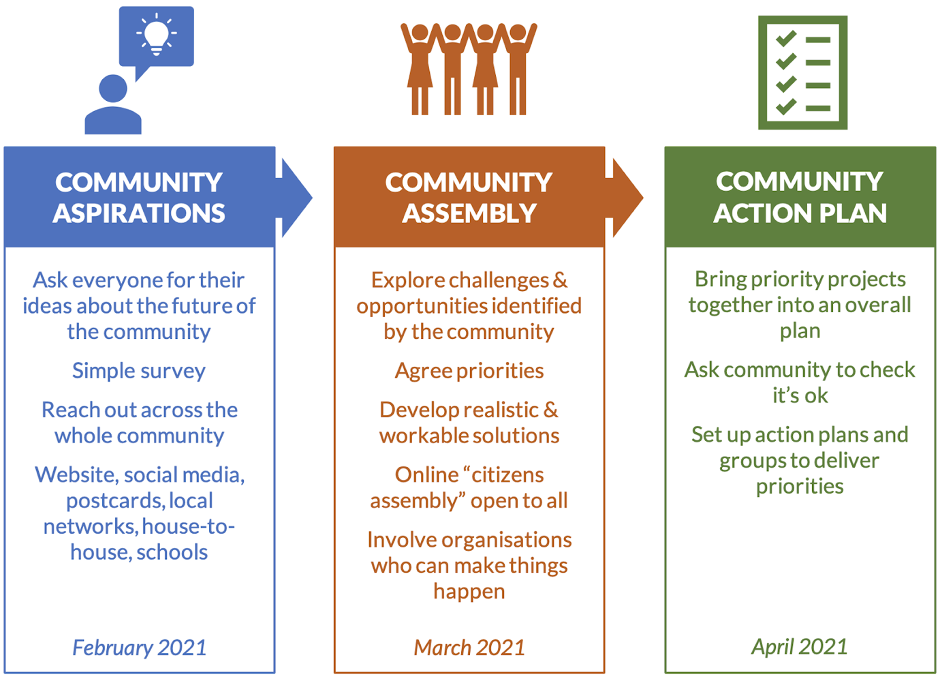
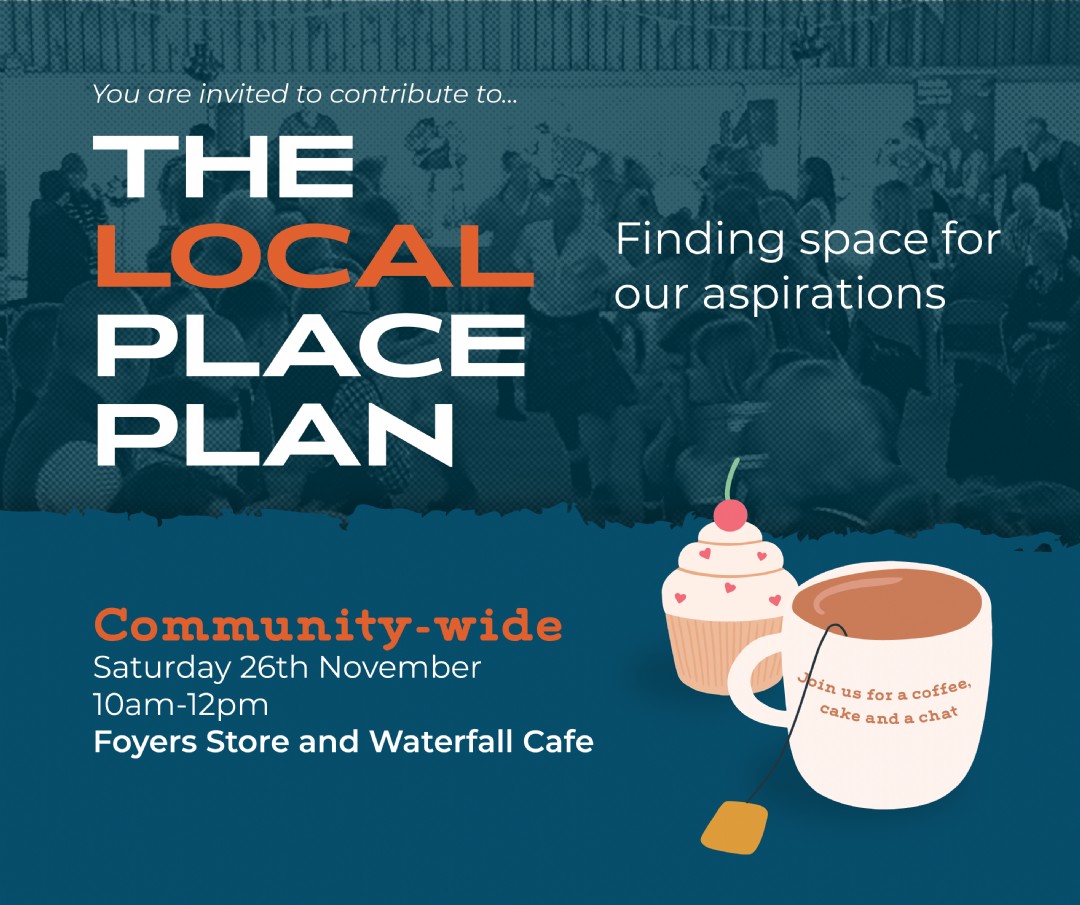

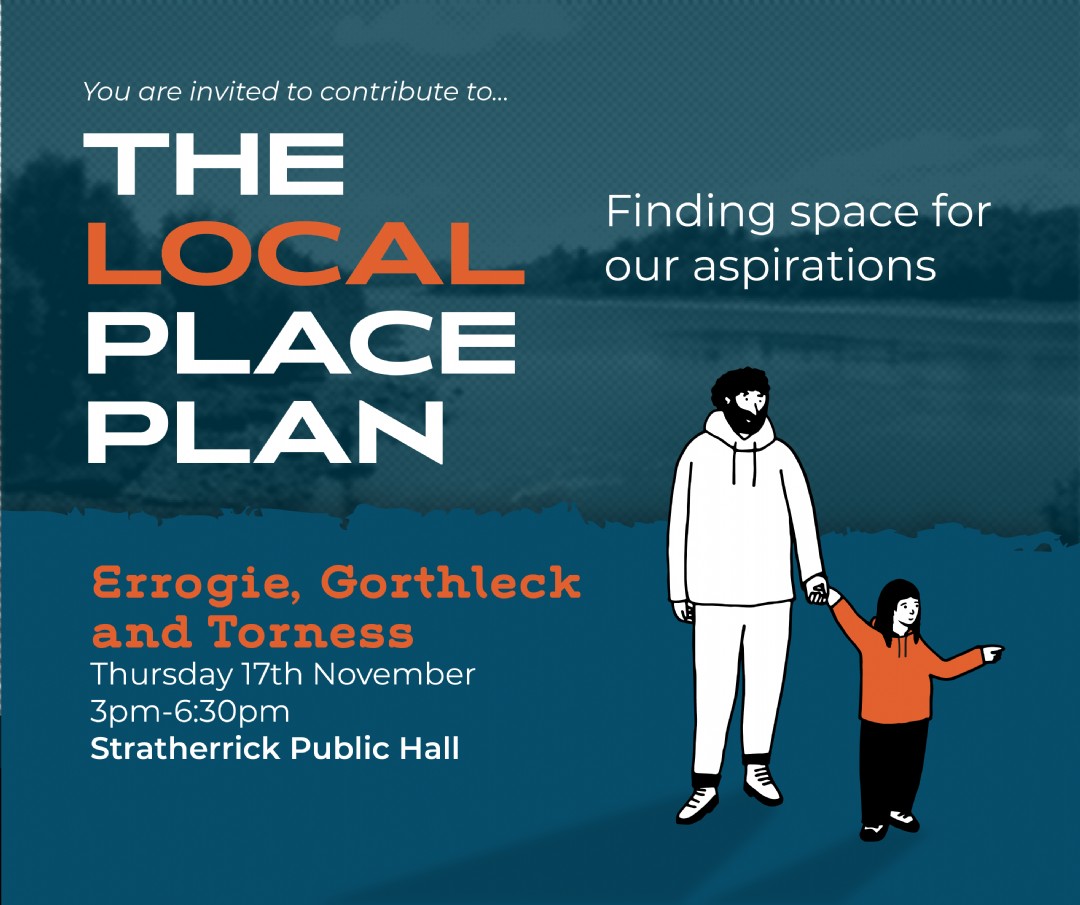
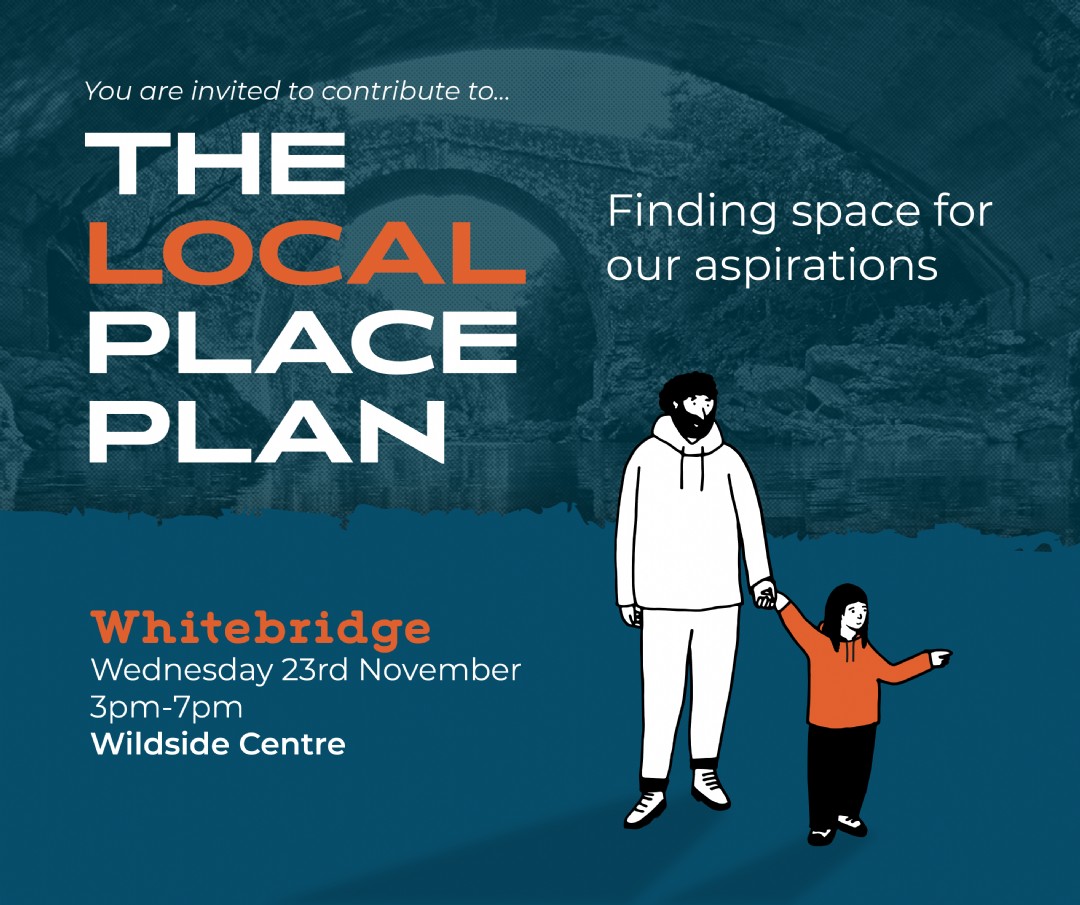
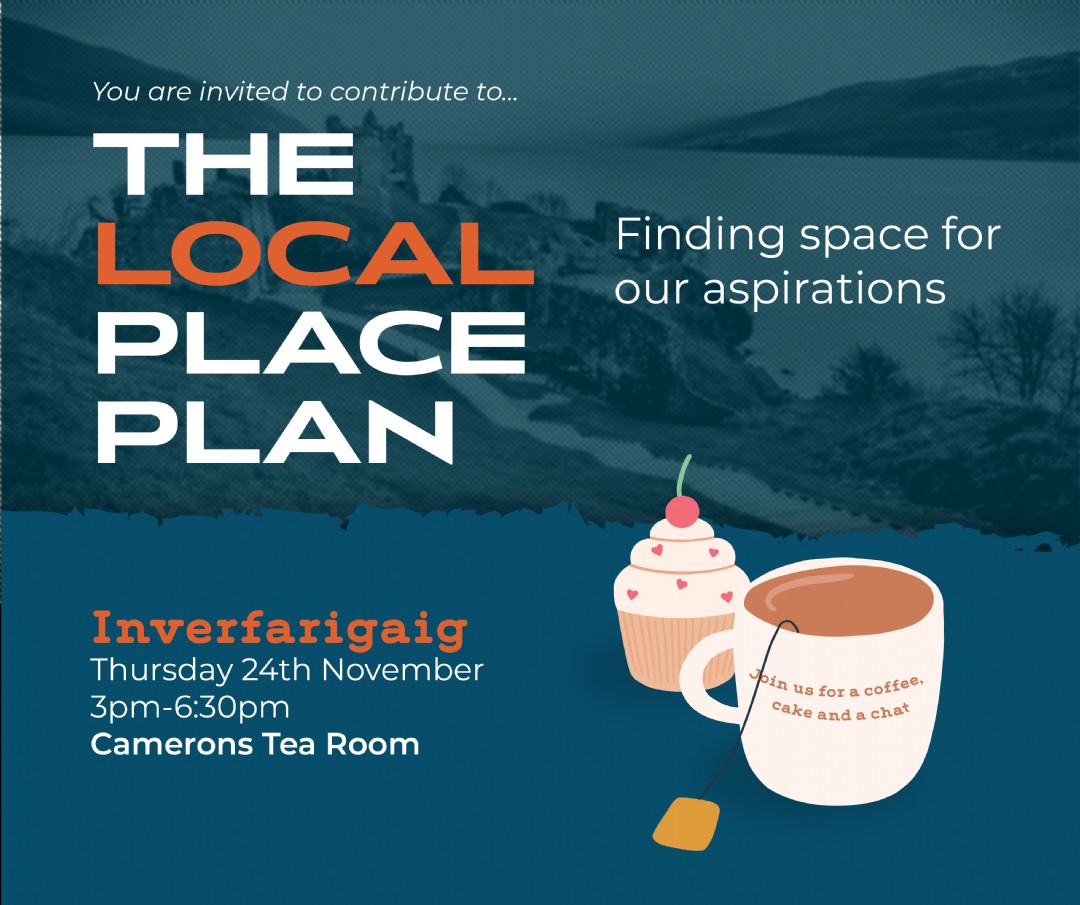
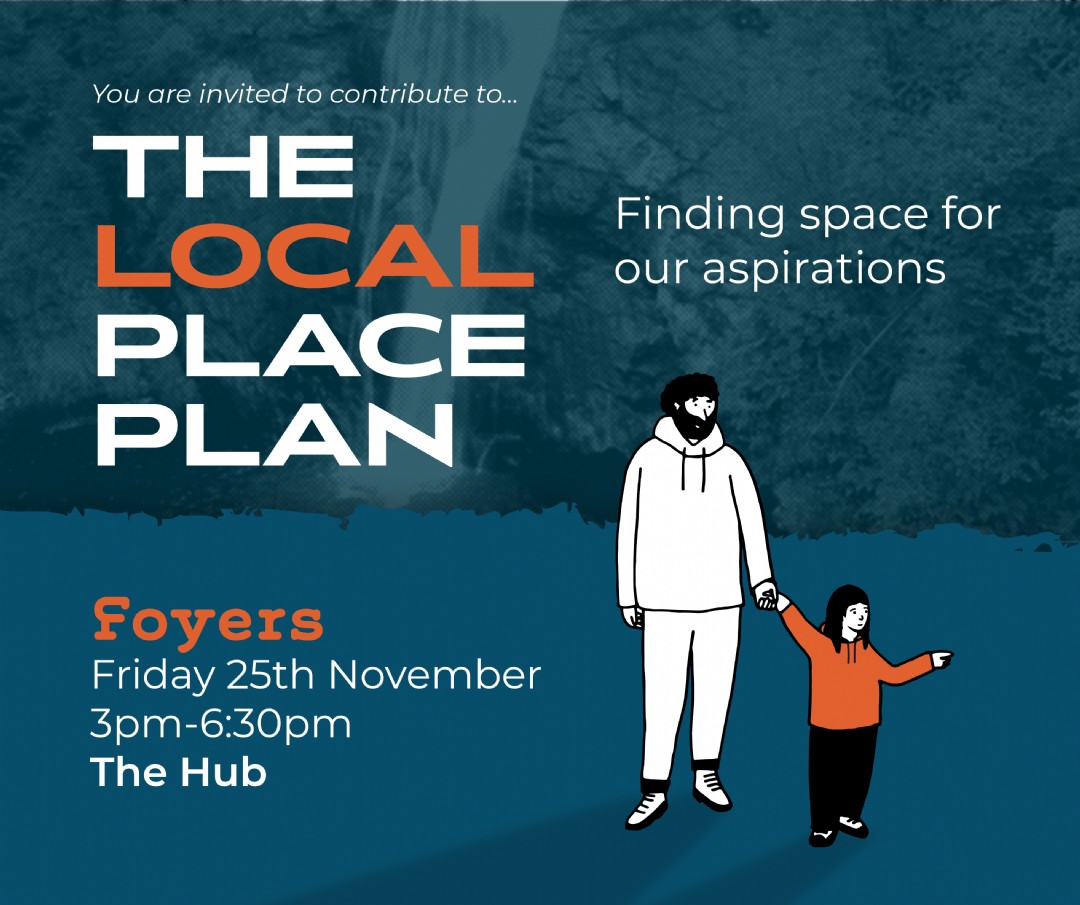

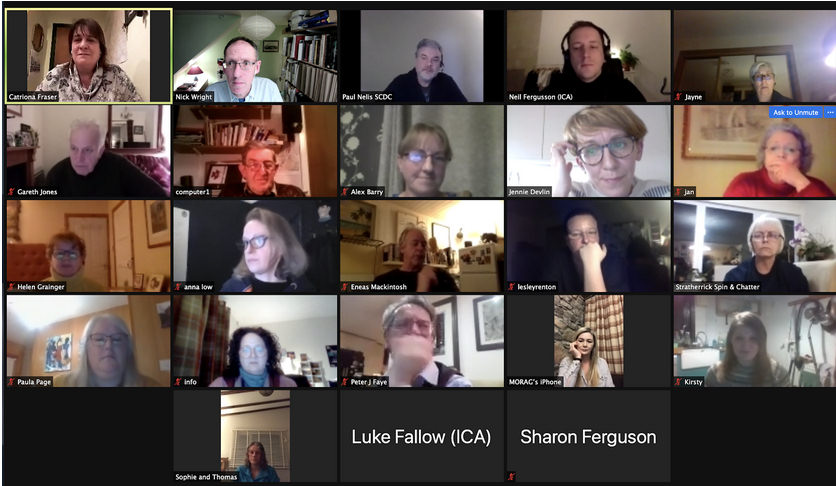
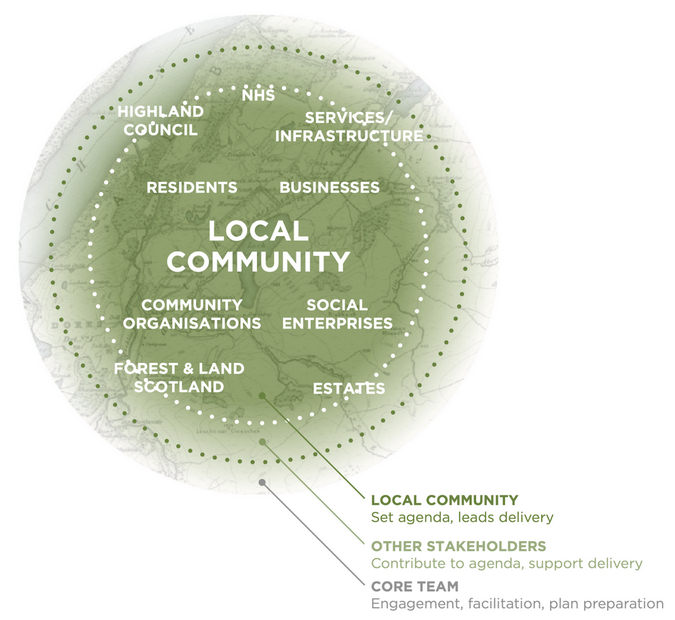 The diagram on the right shows the various groups of participants anticipated during the Community Action Planning process, with the local community at the heart of the process and other stakeholders (examples only) invited to support planning and delivery as appropriate.
The diagram on the right shows the various groups of participants anticipated during the Community Action Planning process, with the local community at the heart of the process and other stakeholders (examples only) invited to support planning and delivery as appropriate.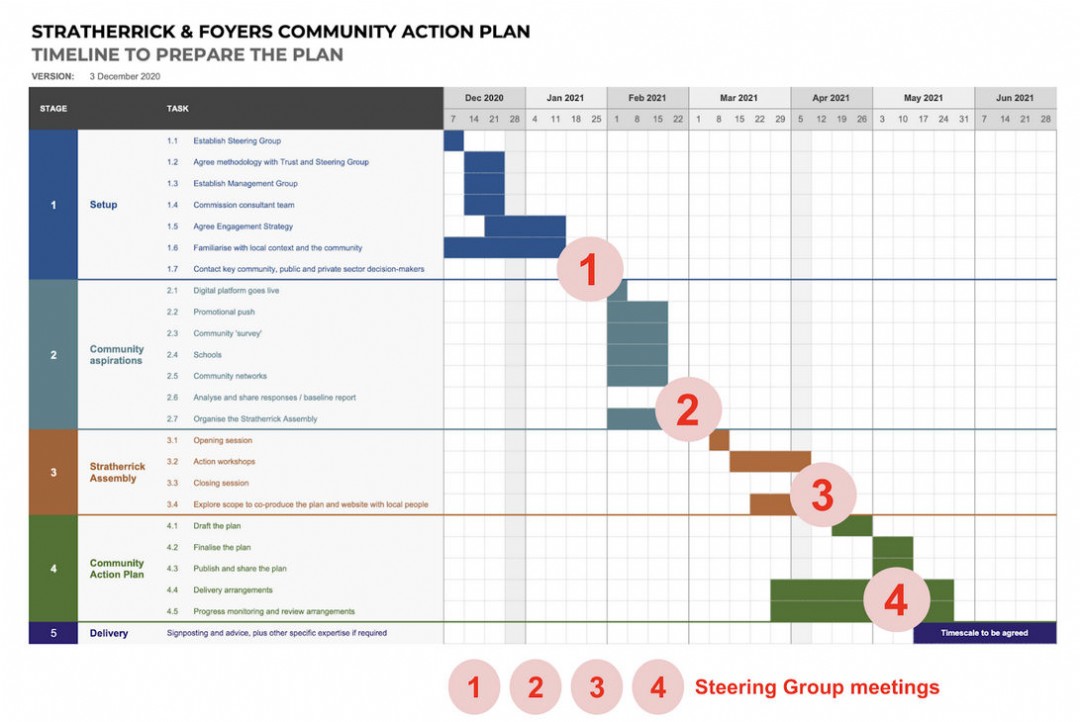
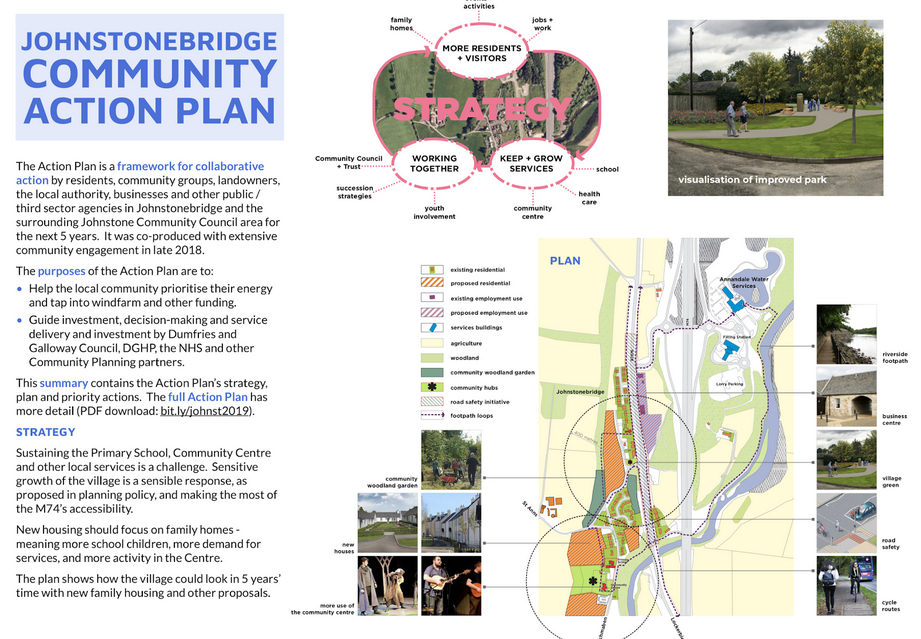
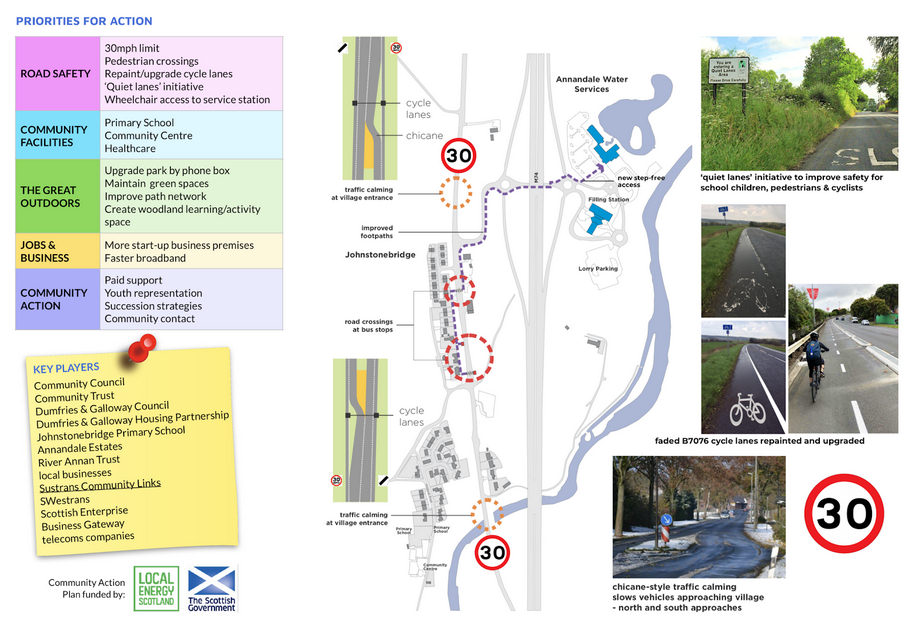
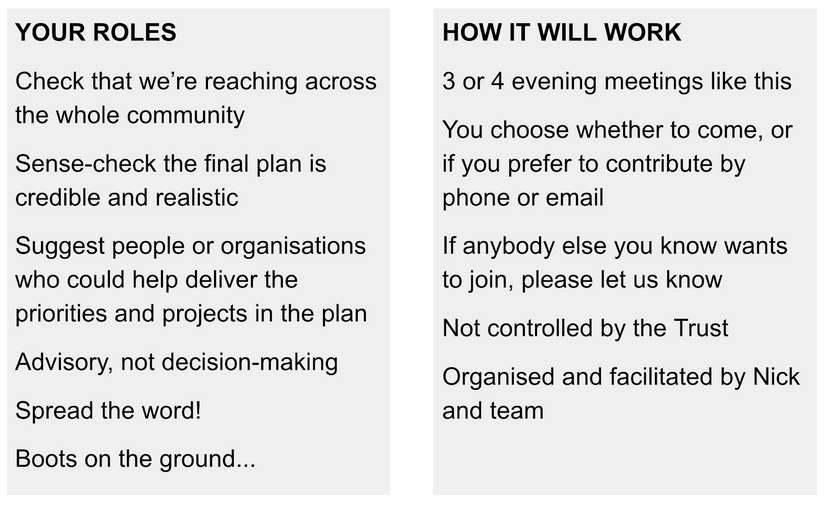

 Stratherrick & Foyers Community Trust,
Stratherrick & Foyers Community Trust,